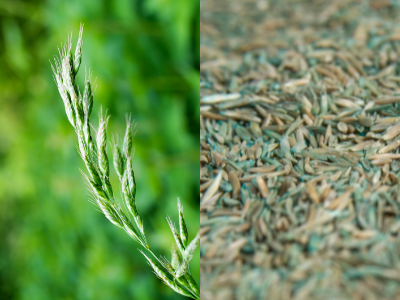22 Mar Keep off the grass!
The dangers of grass seeds in dogs
It’s spring at last! This means nice long walks with your dog over hill and dale as the days finally get warmer. Unfortunately, it also means the worrying problem of grass seeds in dogs.
Yes, the grass may be greener on the other side of the fence, but in springtime, it’s also more dangerous for our furry friends.
What are grass seeds?
Grass seeds are tiny with very pointed ends. It’s this pointy bit that causes the problem as it can get embedded into your pet’s skin, normally, in their paws, armpit, groin area or under their tail. Also, with dogs that enjoy rooting around, grass seeds can get into their ears and eyes too.
Here’s what to look out for:

The risk to our dogs
The problem is that the seeds are so small that they can get stuck in a dog’s skin and cause an infection. This in turn can cause inflammation, painful swelling, and develop further into an abscess.
Seeds can even go into their body and move around taking the infection with it. Dogs can also inhale grass seeds and if this happens it can lead to a chest infection.
To avoid any of this upset and possible harm, prevention is better than cure. When on walks, keep away areas where there’s long grass. At home, try to keep your lawn nice and short.
Remember to check your pet daily, especially after a walk. Inspect them all over as well as between their toes.
If your dog’s got long hair, it’s also a good idea to keep them trimmed and groomed. If you do this yourself, be careful of cutting an embedded seed in half, leaving the other half behind to cause problems, and making it harder to spot!
What to look out for
Here’s a quick list of what to look out for if you’re worried your dog may have grass seeds.
- Eyes: Is an eye swollen, inflamed and red, or even watery? Is your dog rubbing its eyes?
- Ears: Is your pet scratching their ears, rubbing their head against the floor, shaking it or holding their head to one side? Also check if their ear is sore to touch.
- Skin: Look out for areas of skin that are swollen and red with puss or blood? Or your dog is trying to remove seeds by licking or chewing them off.
Don’t panic if you do find grass seeds
If you do find grass seeds, don’t panic! Start removing them, taking care that you’ve got all the seeds.
Here the golden rule is – sooner is better as leaving it may mean surgery is required to find and remove the problem as antibiotics won’t get rid of the grass seed.
When you can’t get a grass seed out, if you notice a lump with pus or blood coming out, or have any concerns about your dog, get them checked out by your vet.
You can utilise our FirstVet offering, which includes unlimited free video consultations with a registered vet. This is included with all 4Paws policies. They can advise you on the best action to take if there are any remaining grass seeds or a reaction to them.
Find out more about FirstVet here.





